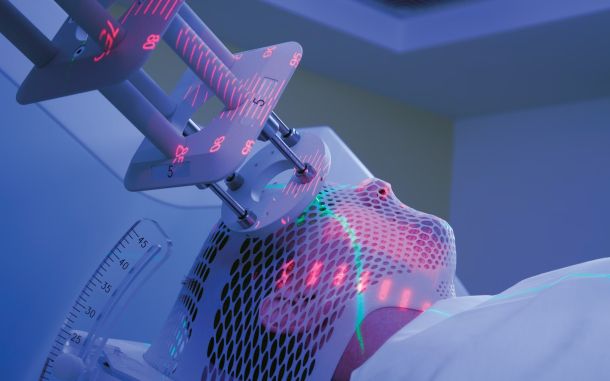Science Square (Issue 155)

In This Article
-
Human activity is taking Earth to the brink
-
Brain circuits underlying obesity
-
AI tool identifies eye diseases and predicts systematic health
Human activity is taking Earth to the brink
Richardson K. et al. Earth beyond six of nine planetary boundaries. Science Advances, September 2023.
A new study suggests that Earth has been increasingly becoming uninhabitable for humans. Human activities are on the verge of significant, irrevocable transformations within our planet's environment. This study reveals that, due to human-induced pollution and the degradation of natural ecosystems, six of the nine established planetary boundaries have already been transgressed. These boundaries, established by scientists in 2009, “all represent components of Earth system critically affected by anthropogenic (i.e., generated by humans) activities and relevant to Earth’s overall state.”
1- Integrity of biosphere
2- Climate change
3- Changes in freshwater supplies and availability
4- Changes in land system
5- The accumulation of novel chemical entities such as synthetic chemicals and nuclear waste
6- Biogeochemical flows such as the global nitrogen cycle
7- Acidification of oceans
8- Ozone depletion in stratosphere
9- Aerosol loading in atmosphere
An extensive analysis, drawing upon a compilation of 2,000 previous studies confirmed that six boundaries (1 through 6 above) have unfortunately been transgressed. Consequently, our planet now finds itself in a condition that surpasses the defined "safe operating space for humanity." These findings imply that Earth's life support systems, which have been relatively stable from the last ice age 10,000 years ago until the start of the Industrial Revolution, are now being pushed to extreme directions. While these results are obviously alarming, there is still hope. Since Earth is a dynamic, living entity, the exact ramifications are impossible to predict. However, computer simulations suggest that we can potentially halt this trajectory by concentrating efforts on saving forests, thereby overcoming the issue of climate change. Reverting to the forest levels of the late 20th century is predicted to divert substantial excess carbon dioxide in the air, mitigating global temperature rise and enhancing biodiversity, offering a promising path forward.
Brain circuits underlying obesity
Barbosa DAN et al. An orexigenic subnetwork within the human hippocampus. Nature, August 2023.
A recent study has illuminated a crucial connection between memory and appetite within the human brain, shedding light on the underlying factors contributing to obesity. To delve into this phenomenon, researchers conducted brain scans on a cohort comprised of 34 subjects spanning a spectrum of body types, ranging from lean to overweight to obese. During these brain scans, participants were presented with a sweet indulgence in the form of a chocolate milkshake, which they subsequently consumed. This experimental setup allowed the researchers to closely monitor real-time neural responses associated with anticipation and reward.
The imaging sessions revealed a noteworthy observation: individuals classified as obese exhibited impaired connections between the dorsolateral hippocampus (dlHPC), situated in the brain’s memory processing domain, and the lateral hypothalamus (LH), responsible for regulating physiological equilibrium. This suggests a disruption in the regulation of emotional responses when anticipating pleasurable treats. Notably, both the dIHPC and the LH play pivotal roles within this circuit.
Furthermore, a direct correlation emerged in individuals with obesity between the extent of dysfunction within the hypothalamus-hippocampus circuit and their Body Mass Index (BMI). Higher BMI values were associated with more pronounced disruptions. These discoveries emphasize that certain individuals may possess fundamental differences in brain regions that heighten the risk of obesity. Consequently, addressing obesity and related eating disorders should extend beyond the conventional approach of self-control and dietary choices. Rather, future therapeutic interventions should explore innovative strategies that include restoring dysfunctional brain circuits and acknowledging the intricate interplay between memory and appetite as a promising avenue for intervention.
AI tool identifies eye diseases and predicts systematic health
Zhou Y et al. A foundation model for generalizable disease detection from retinal images. Nature, September 2023.
A novel artificial intelligence (AI) tool called RETFound has been developed by researchers to harness retinal images for the diagnosis and prediction of various health conditions, including ocular diseases, heart failure, and Parkinson's disease. RETFound distinguishes itself by utilizing self-supervised learning to eliminate the need for manual labeling of retinal images during training, which is typically time-consuming and costly. Retinal images offer a unique window into an individual’s overall health, affording a direct view of the body's capillary network, thereby revealing signs of cardiovascular disease and neural tissue health. AI aids in interpreting these scans, making them accessible to more individuals. Following an initial phase of pre-training on an extensive dataset of unlabeled retinal images, RETFound exhibited rapid adaptability to recognize specific disease-related retinal features when introduced to a small number of labeled images for various health conditions. RETFound demonstrated notable proficiency in detecting ocular diseases such as diabetic retinopathy and showed promise in predicting the risk of systemic diseases, though further improvement is still needed. The model represents a noteworthy application of foundational AI models within the realm of medical imaging, and researchers are actively exploring its potential application to other categories of medical imaging beyond retinal scans.









